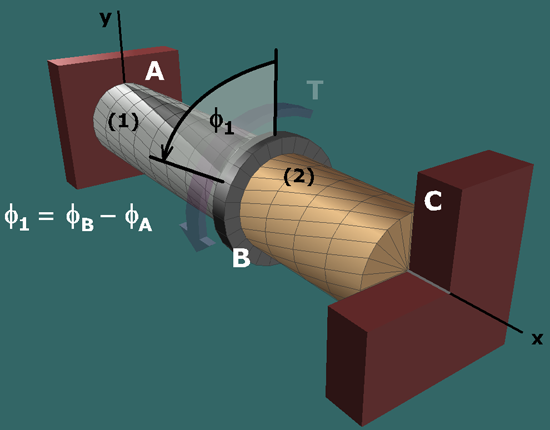
Consider shaft (1). The torque T causes shaft (1) to twist as shown.
The angle of twist in a shaft can be determined by considering the angles of rotation at its two ends.
Moving in the +x axis direction from A to B, the angle of twist is simply the rotation angle at the forward end B minus the rotation angle at the aft end A: